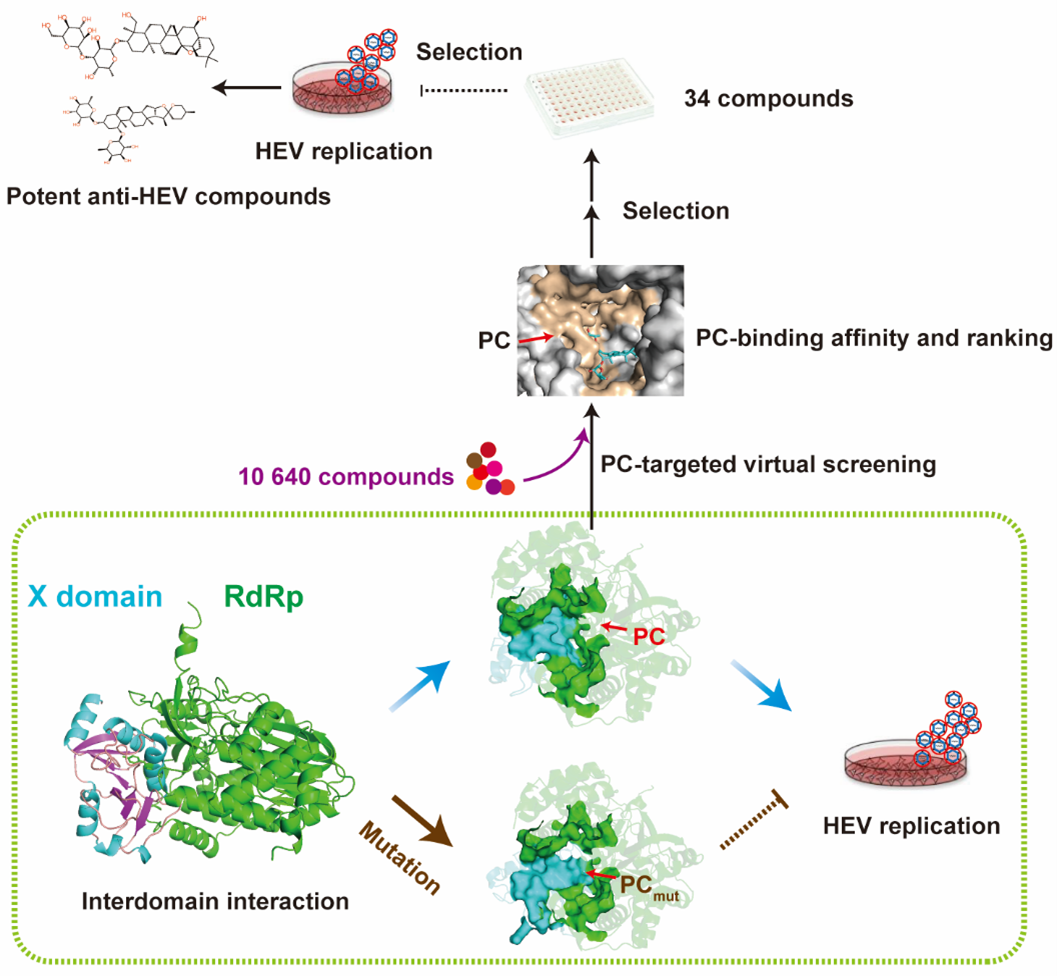Hepatitis E virus (HEV), a major cause of acute viral hepatitis globally, poses a significant public health threat in both developing and industrialized countries. It leads to approximately 20 million infections and 60,000 fatalities annually. While most HEV infections in healthy individuals are self-resolving or present with mild gastrointestinal symptoms, they can progress to chronic hepatitis, and even cirrhosis in immunosuppressed individuals. Moreover, HEV infection in individuals with pre-existing liver disease frequently leads to acute liver failure, and pregnant women face a dramatically elevated mortality rate of up to 30%.
Despite this substantial disease burden, therapeutic options remain limited to supportive care or off-label ribavirin or pegylated interferon-alpha (IFN-α), with no approved anti-HEV medication available. This critical treatment gap underscores the urgent need to elucidate HEV replication mechanisms to identify virus-specific antiviral targets, and develop potent and specific antivirals against HEV.
A recent study led by Dr. Wenshi Wang from Xuzhou Medical University, China, dived into the mechanistic insight of HEV replication.
HEV is a positive-sense, single-stranded RNA virus containing three open reading frames (ORFs). ORF1 encodes a nonstructural polyprotein that is pivotal for viral replication. This polyprotein includes multiple domains: methyltransferase (Met), Y domain, papain-like cysteine protease (PCP), hypervariable region (HVR), X domain, RNA helicase (Hel), and RNA-dependent RNA polymerase (RdRp). However, the specific role of the X domain in HEV life cycle has remained poorly characterized, hindering a comprehensive characterization of ORF1 polyprotein and the identification of virus-specific antiviral targets.
The researchers demonstrated that the X domain is a critical component of HEV replication machinery. Intriguingly, its known ADP-ribose hydrolase activity is dispensable for HEV replication. Instead, the X domain facilitates HEV replication through its intricate interdomain interaction with the RdRp. Structure-based functional analysis revealed that this interaction between X and RdRp domains forms a “pocket-like” cavity (PC) at their interdomain interface. Mutations of key PC-forming residues (X domain: K937, Y943, R944; RdRp: G1590) completely abolished HEV replication, confirming the PC’s essential role.
Leveraging this finding, the team screened over 10,000 commercial compounds using a PC-targeted high-throughput virtual platform. Top hits with high predicted binding affinity underwent cell viability assays, and their anti-HEV activity was assessed using advanced in vitro HEV models. Ultimately, two PC-binding compounds (saikosaponin D and liriopesides B) were identified as potent anti-HEV inhibitors. These data highlight the indispensable role of the PC in HEV replication and validate its potential as a novel anti-HEV target for the development of potent antivirals.
In summary, the X domain is an essential structural and functional component of the intact ORF1 polyprotein, which is strictly required for HEV replication. The identification of the PC located at the interdomain interface between X and RdRp domains establishes this region as a novel, virus-specific antiviral target. These findings provide mechanistic insights into HEV replication complex assembly and enable structure-based development of inhibitors targeting critical interdomain interactions.
Read the full article: Advanced Science. 2025 Oct 2:e01699. DOI: 10.1002/advs.202501699

